I’ve been mountain biking for over 30 years, with a good chunk of those spent between race tapes.
The races in question varied in discipline, spanning everything from Lycra-clad cross-country racing to full-on, white knuckle downhill, along with some multi-stage enduros thrown in for good measure.
But not once in all those years of riding have I ever participated in any kind of organised event on a bike with drop bars. Until, that is, I agreed to attempt the Dirty Reiver.
For those not in the know, the Dirty Reiver is a timed gravel event that covers 65, 130 or 200km of the Kielder Forest, which spans the border region of England and Scotland.
Just how different could it be? And what, after three decades of racing mountain bikes, could I learn from 130km (no, I didn’t do the full 200km) of gravel racing?
Group gravel riding can be downright scary

It’s one thing to rip along the road in a tightly packed group with your mates, but riding in a bunch on a slippery, unpredictable surface at speed with a bunch of strangers is, at times, terrifying.
It’s a very different experience to racing cross-country on a mountain bike, where the riders quickly get thinned out as you enter the first section of singletrack. Sure, XC delivers a bit of bar-to-bar bumping, but as the race wears on, you generally end up riding with far fewer people.
A gravel event, it seems, is more like the start of the Mega Avalanche, except your brakes aren’t as good, and you’re wearing far less protection, despite clocking higher speeds – and it seems to last for longer.

At an event of this size, with this number of people, even when I did lose contact with one group, I soon found myself riding with another.
While gravel has some similarities with mountain biking, when it comes to rides such as this, the road influence really comes to the fore, especially when riding in a big bunch.
With mud, gravel and slippery embedded rock under your tyres, you find your face being pummelled with dirt from the rear tyre of the rider in front (it was very wet during this year’s edition).
There’s also a chance you’ll smack a pothole/massive rock/someone’s bottle/a loose saddle pack and be sent careering off into the undergrowth, puncturing the lightweight tyres that, let’s be honest, have the weight of the world resting on their thin, flimsy, shoulders.

Concentration is key here, too. While it’s easy to slip into a hypnotic state watching the rear wheel of the rider in front, you need to keep your head and eyes on a swivel.
And, if that rider points to something on the trail or road, be warned, they aren’t pointing at a badger doing sudoku (sadly) or anything as exciting as that. This is in fact a warning that something needs avoiding.
Find your Guardians of the Gravelty
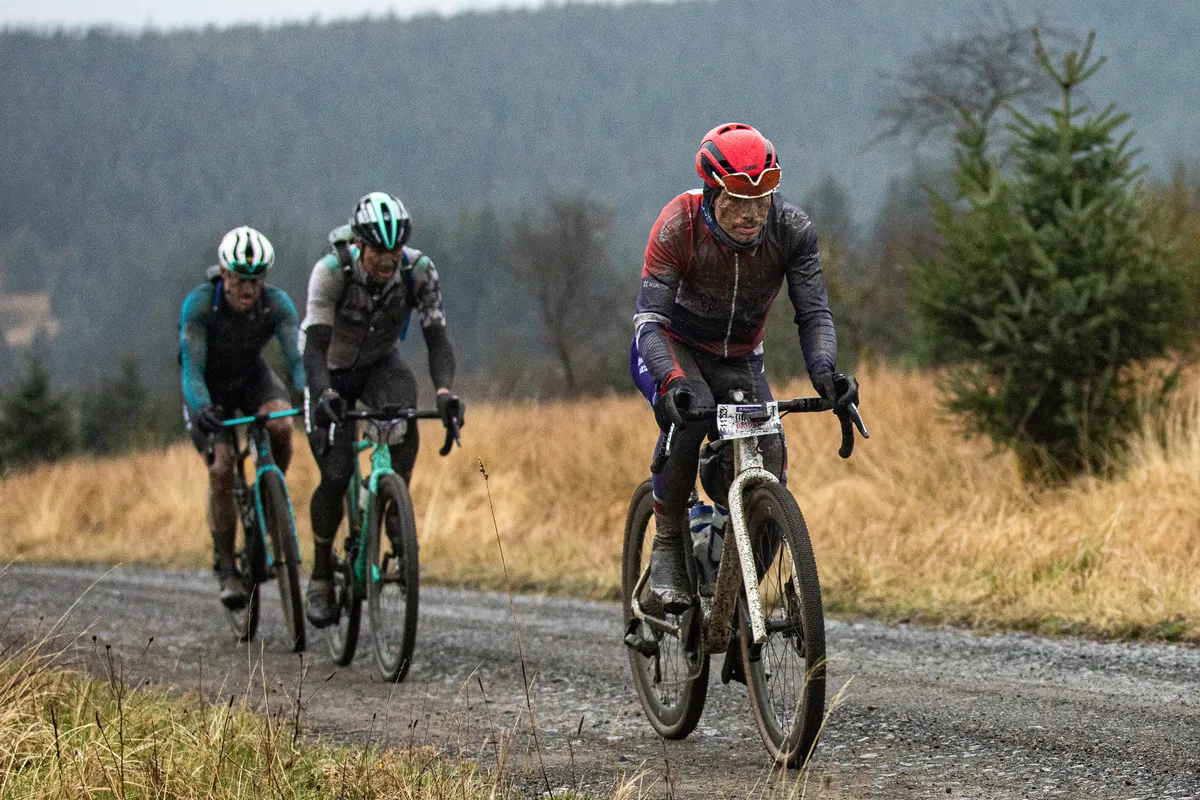
I ride 100km on a road bike maybe only a handful of times each year.
Instead, I spend most of my time riding a mountain bike with heavy tyres, and a lot of suspension travel, up a steep hillside so I can ride back down as fast as possible. I’ll repeat this for a good few hours until my legs stop working properly.
Plugging away for 130km takes a long time and if you’re on a bike with 40mm tyres, being buffeted around by the rough surface beneath you, it can take even longer.
It’s a very different proposition to what I’m used to, that’s for sure.
Finding a group of riders you can tag along with helps with not only your pace, but morale, too. These are your Guardians of the Gravelty.
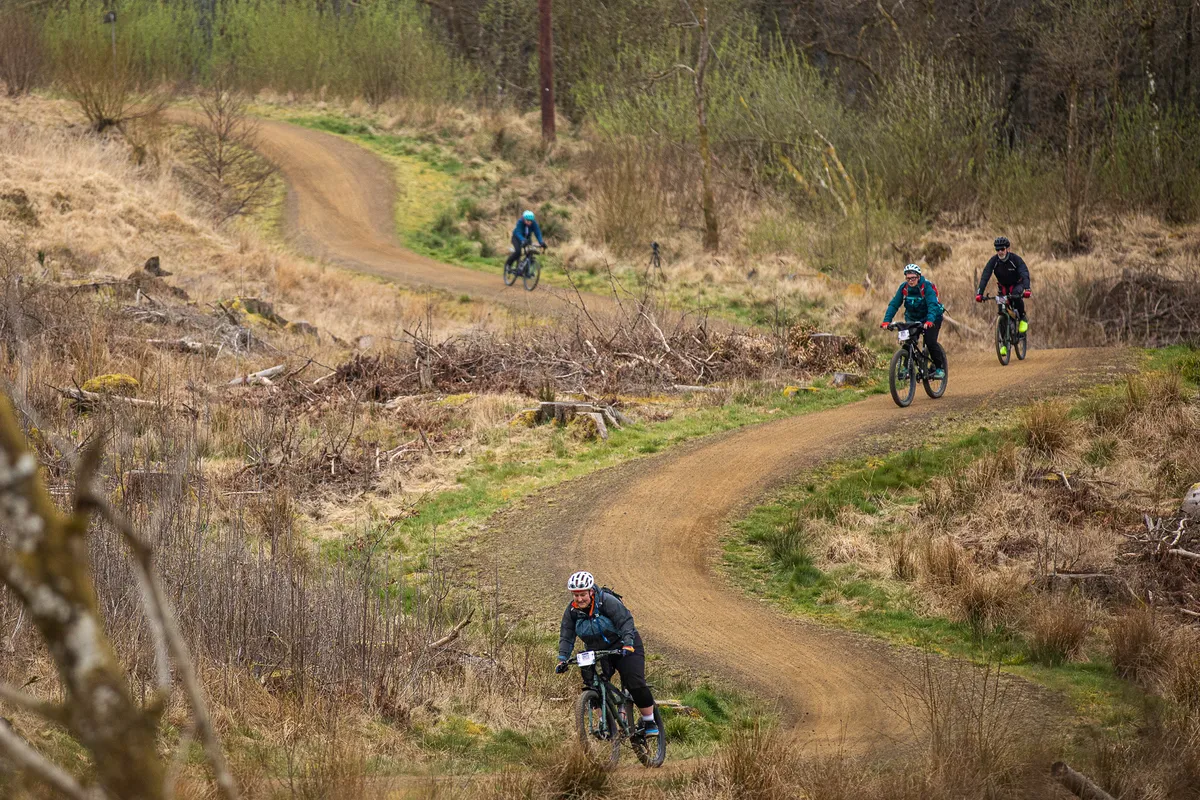
Etiquette when riding in a group is important. Following another rider offers shelter from the wind and helps you to save energy, but be prepared to take your turn on the front when it comes.
Sure, zipping along in an unfamiliar group can be borderline terrifying to the uninitiated. However, find a good bunch of well-paced, sensible individuals and before you know it, you’ll be at the final feed zone with mud in your eyes, a smile on your face and enough energy to keep trucking on for the final few kilometres. Thanks guys!
Wear all the layers
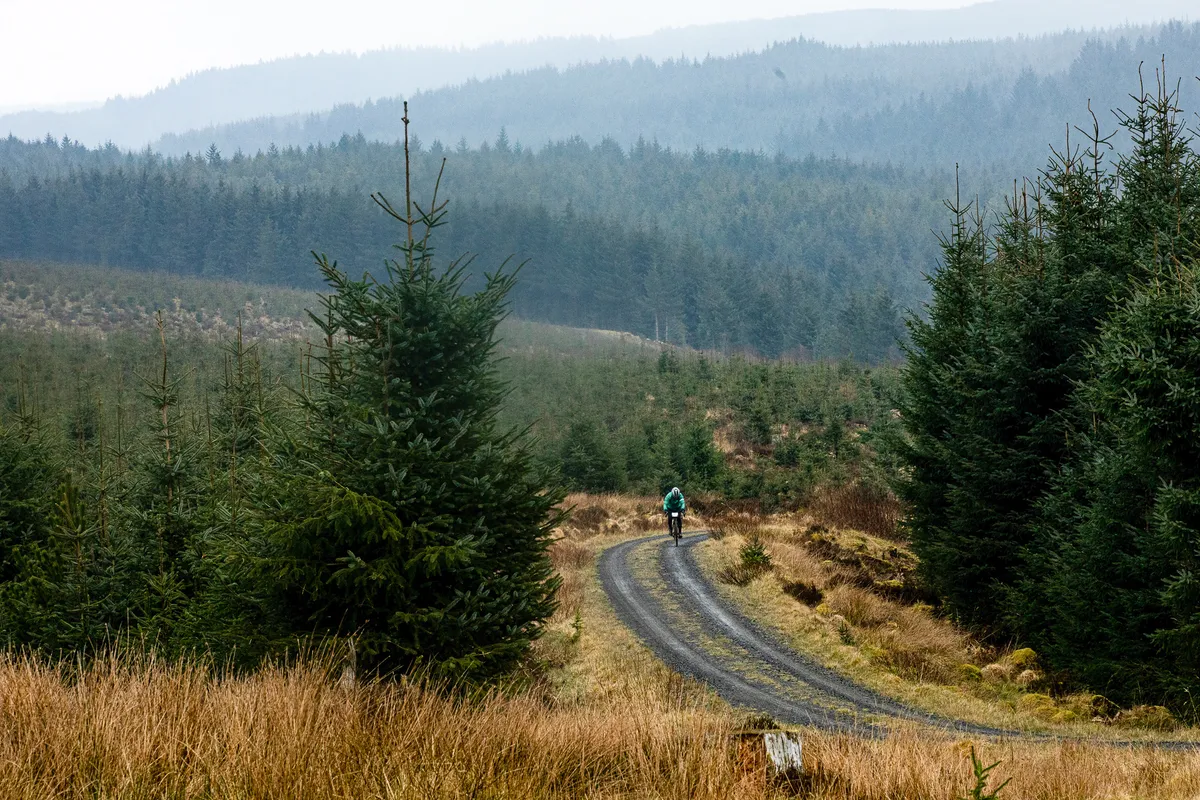
While road and gravel riding are physically exhausting, it’s a different kind of workout for your body.
My main takeaway from riding the Dirty Reiver on a cold, damp day was you need to wear far more layers than you might do on a mountain bike.
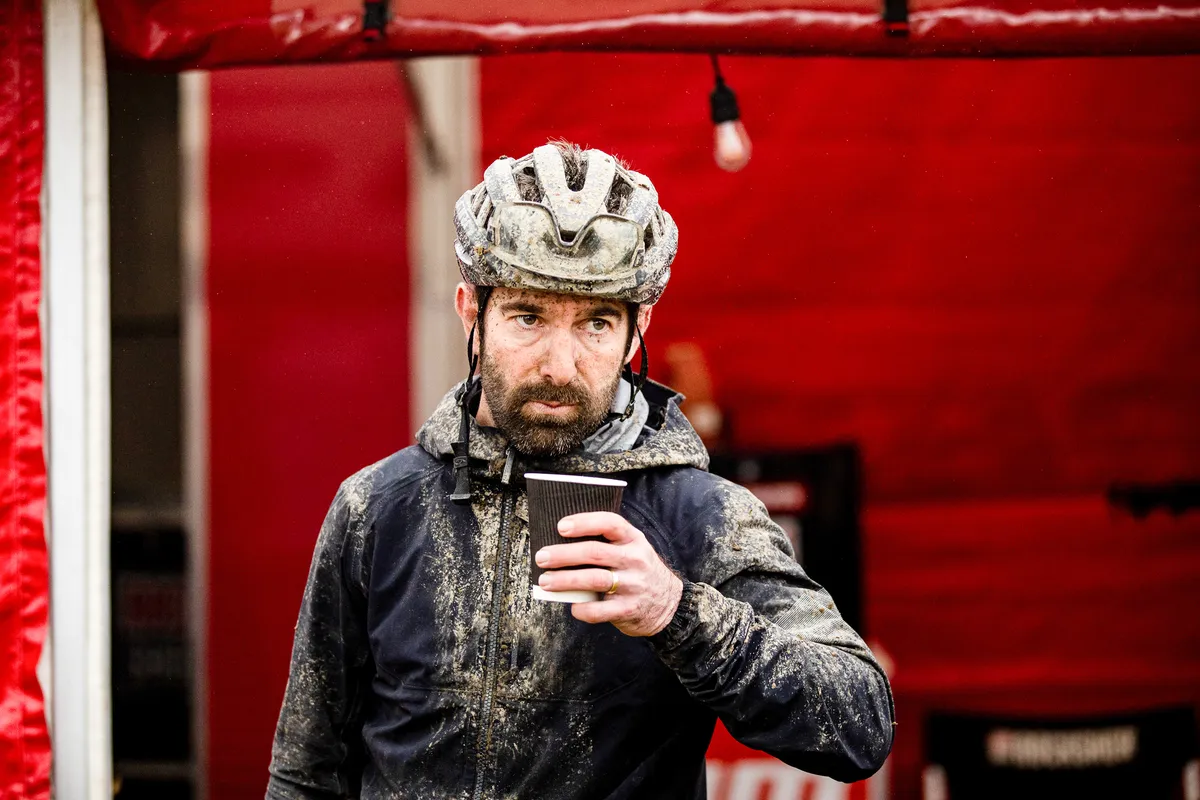
Why? Well, quite simply put, your upper body doesn’t really do a whole lot of moving around while you ride.
On a mountain bike, you tend to stand up out of the saddle and use your arms a lot more to absorb bumps or throw the bike around.

This isn’t generally the case on a gravel bike. I ended up wearing a baselayer, Windstopper jersey, fleece-lined gilet and Windstopper jacket for the full 130km ride.
In similar conditions on a mountain bike, I’d probably wear a baselayer and Windstopper jersey, only pulling out a jacket if the weather really turned.
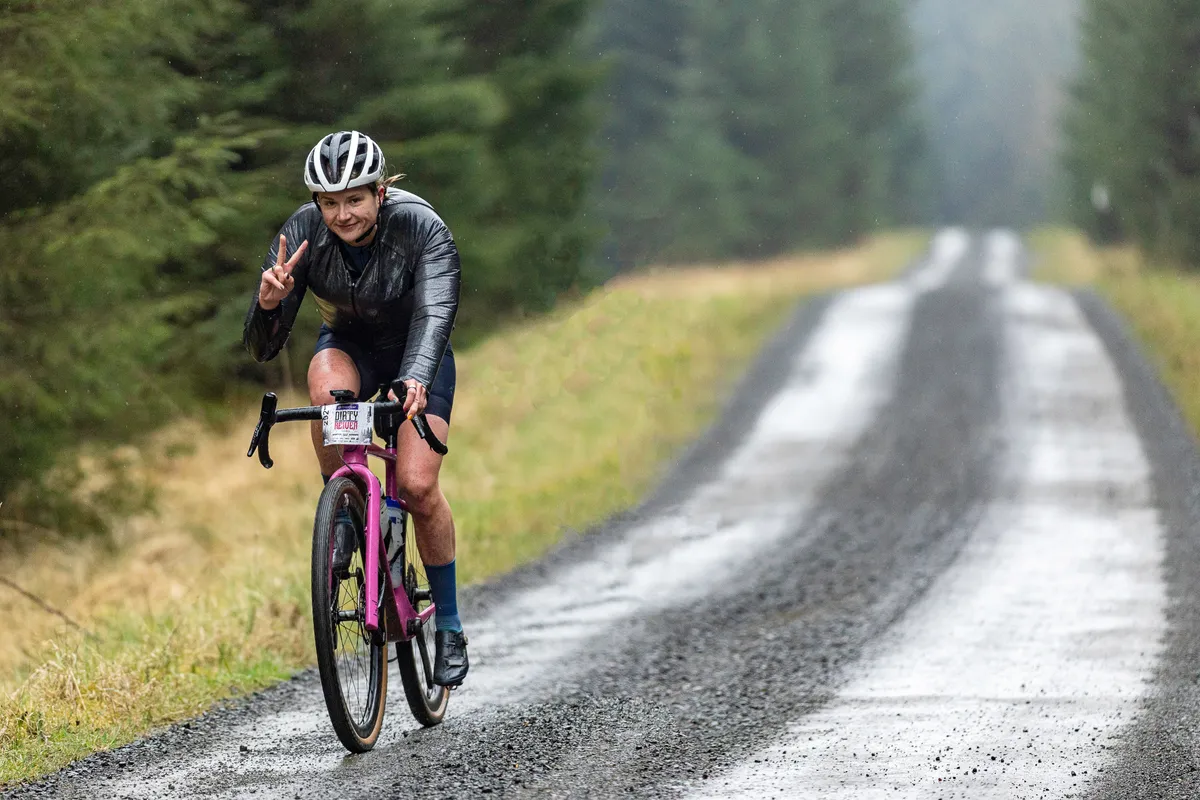
At about the halfway point, around 2 hours 30 minutes in, the wind got up and it rained quite heavily. To say I was pleased with my over-the-top choice of layers would be an understatement.
While others shivered, I continued to stay warm and dry. And maybe a little bit smug, too.
Eat everything you can carry and then some

This will sound obvious – but eat as much food as possible if you’re heading out on a long ride.
Having ridden the same sort of distance before, albeit on a road bike, I figured the couple of energy bars I had should suffice and get me round just fine. This was not the case.

It turns out that, like mountain biking, covering that distance when you’re rattling over rocks, grit, gravel and mud takes more energy. It’s fair to say I underestimated this and should have approached it more like a big day out on the mountain bike.
Bars, bananas, sandwiches and whatever else you can attach to yourself or your bike (now I can see why people who do this regularly have so many bags on their bikes) will all be eaten, so carry whatever you can. And don’t forget your electrolytes, like I did.
Make the most of the feed zones, if the event you’re doing has them. Okay, a longer stop will equate to a slower time, but if you eat too little, and suffer the bonk of all bonks, you’ll fail to finish.
Be prepared

While the best gravel bikes are spectacular bits of kit, many of them (especially their gravel tyres) are relatively fragile compared to modern mountain bikes.
As a result, pummel one over rough ground for five to eight hours and you’ll more than likely encounter some kind of mechanical hiccup.
With gravel races such as the Dirty Reiver being in relatively remote locations, you can’t just order an Uber and make your way home with your tail between your legs and your bike in bits.
The mantra for the day should be “be prepared”. Boring, yes, but it’ll pay off at some point.
The number of people stopped by the side of the fire road fixing punctures was staggering. I couldn’t believe how many people I saw with wheels out and tubeless sealant everywhere, frantically pumping away in the hope they’d soon be back on their bike.

Carry the essentials, but be sure to pack extra tyre plugs, CO2 canisters (and a pump), tubes and a decent tyre boot, along with the usual kit.
The best outcome is you don’t need any of it and can help a fellow rider. In the worst case, you'll use the lot but still make it through to the end.
Either way, you’ll have that warm fuzzy feeling when you roll over the finish line with the ride completed, ready to sup on a nice cold beer (craft beer only, of course – the gravel crew are too cool to accept anything less) and share your tales of adventure with the other finishers.


















